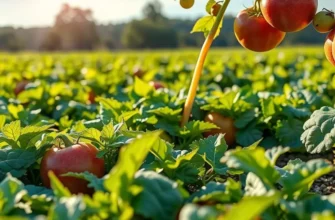Managing compostable scraps can significantly reduce household waste while nourishing the earth. With the right strategies, you can transform your kitchen habits to support sustainability and create nutrient-rich compost, benefiting both your garden and the planet. Discover how to effectively store and manage your food scraps in two chapters filled with actionable insights.
Setting Up Your Composting System

Composting is an essential practice for minimizing food waste at home. Choosing the right composting method starts with understanding your space and lifestyle. Whether you have a sprawling backyard or a cozy apartment, options abound to suit your needs.
For indoor composting, consider a compact countertop bin or a worm composting system, known as vermicomposting. Countertop bins are simple to use and ideal for those who generate small amounts of scraps. Look for airtight models to prevent any odors and ensure they have filters to absorb smells. Vermicomposting, on the other hand, requires more space and commitment. It involves using worms to break down organic materials into nutrient-rich castings. This method is highly effective for confined spaces and can even be educational for children.
Outdoor composting offers several options such as tumblers, compost bins, and open piles. Tumblers are user-friendly and allow for easy mixing, reducing the effort needed to turn the compost regularly. Compost bins are practical for those who want a neater, more contained solution. These typically have lids to deter pests and retain moisture. If you have the space, setting up an open compost pile can be the most cost-effective approach, although it requires more maintenance to ensure materials are properly mixed and aerated.
When gathering materials, balance is key to efficient composting. Collect a mix of greens, such as kitchen scraps rich in nitrogen, and browns like dry leaves or shredded paper, which provide carbon. This balance ensures the compost heats up and breaks down efficiently. A good rule of thumb is to aim for equal parts by weight.
Ensure you have the right tools on hand—pitchforks for turning, a garden hose for moisture, and a compost thermometer for temperature monitoring. The right moisture level is essential: think of a squeezed sponge for optimal dampness. Adequate airflow can be enhanced by regularly turning the pile and ensuring a variety of sizes in the input materials to prevent compaction.
For storing kitchen scraps before transferring them to the compost bin, use a smaller container. Consider eco-smart kitchen storage options, as outlined here, to prevent odors and fruit flies from becoming nuisances.
Maintenance involves regular mixing to aerate the pile and monitoring for pests or odor. If unpleasant smells arise, it usually indicates an imbalance. Address this by adding more browns and aerating the compost pile, which should mitigate the issue.
By setting up an efficient composting system, you turn waste into a valuable resource. This not only cuts down on landfill contributions but also enriches your garden with nutrient-laden compost that improves soil health. With the right setup and maintenance routine, composting at home becomes an easy and rewarding eco-friendly practice.
Effective Practices for Collecting and Storing Scraps

Managing kitchen scraps can be straightforward with the right methods. To start, designate a specific collection area in your kitchen to separate compostable items. Use compostable bags or lined containers, which simplify transportation to outdoor compost piles or bins. Ensuring materials are compostable helps maintain an eco-friendly approach.
An ideal setup minimizes hassle and encourages regular use. Place the container or bag near your food prep station, making it convenient to dispose of vegetable peels or eggshells immediately. For efficient sorting, familiarize yourself with what can be composted, as some materials might seem compostable but aren’t suitable for home composting systems.
Short-term storage is crucial for maintaining a clean kitchen environment. Use an airtight container to collect scraps and reduce exposure to air, which curtails odors and deters pests. These containers, which shouldn’t be too large, need regular emptying to avoid fermentation and other issues.
For long-term storage, consider outdoor compost bins. Position them in a shaded area with enough airflow. Layer green (nitrogen-rich) and brown (carbon-rich) materials properly to enhance decomposition. Maintaining this balance ensures your compost pile is active and efficient.
Odor control is a common concern. Combat unpleasant smells using brown materials like shredded newspaper or straw as they absorb moisture and balance nitrogen levels. Citrus peels are also effective as natural deodorizers, adding a fresh scent to your kitchen.
To further prevent pests, ensure proper sealing of indoor containers. Avoid attracting fruit flies by burying scraps under a layer of brown material outdoors. If flies persist, a simple vinegar trap can be a quick solution.
Utilize tools such as kitchen compost pest traps or garden lime for substantial infestations. While these preventive measures are usually sufficient, integrating ongoing education about composting practices with family members enhances commitment and success in reducing waste.
For additional insights on maintaining an eco-friendly kitchen environment, consider exploring strategies in eco-smart kitchen storage. These practices complement your composting efforts by ensuring all aspects of your kitchen thrive sustainably.
Beyond practical execution, the process of collecting and storing scraps forms an integral part of minimizing household food waste, contributing to broader sustainability goals. Transforming your kitchen into an eco-friendly hub not only aids the environment but also inspires others to adopt similar measures.
Final words
Managing compostable scraps positively impacts not only the environment but also contributes to a healthier home. Through efficient composting systems and proper storage practices, you can minimize waste while supporting organic gardening. By implementing these straightforward tips, start transforming everyday kitchen habits into sustainable actions that benefit your community and planet. Each small effort counts towards a larger impact, inspiring others to adopt similar practices.







